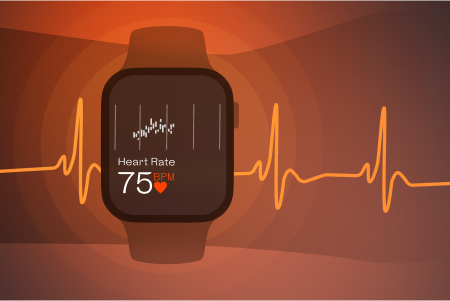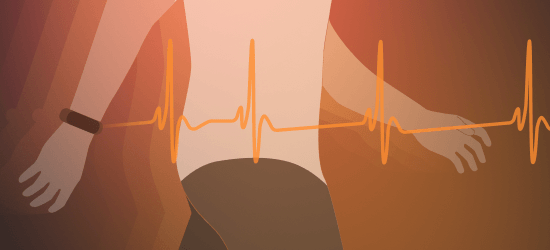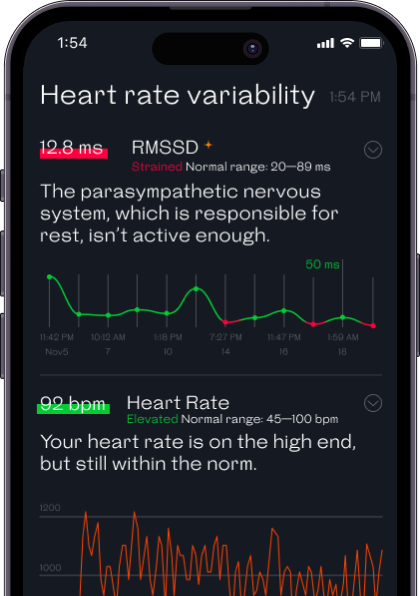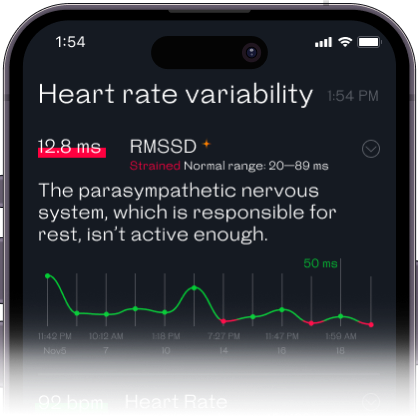


Welltory — All-in-One Wellness App.




Home » Activity & Workouts » Walking Heart Rate

Walking, a simple yet powerful form of exercise, offers a plethora of health benefits that often go unnoticed. One of the most vital aspects of walking is its impact on heart rate. In this article, we will explore the significance of walking heart rate and how integrating heart rate monitoring into your routine can help you unlock your true fitness potential.
A person’s walking heart rate can vary depending on their age, fitness level, and individual factors. However, as a general guideline, it is often recommended to maintain your heart rate within a specific target zone while walking to optimize health benefits. This target zone is typically between 50% and 85% of your maximum heart rate [1].
To calculate your maximum heart rate, subtract your age from 220. For example, if you are 40 years old, your estimated maximum heart rate would be 180 beats per minute [2]. Using this information, you can determine your target heart rate zone for walking:
In this example, the person’s walking heart rate should ideally be between 90 and 153 BPM to maximize health benefits. It is important to note that these values are approximate and can vary between individuals. You should also consider your current fitness level and any existing medical conditions when determining your ideal walking heart rate [3].
| Age | Max HR | Average Walking Heart rate |
| 20 | 200 | 100 – 170 |
| 30 | 190 | 95 – 162 |
| 40 | 180 | 90 – 153 |
| 50 | 170 | 85 – 145 |
| 60 | 160 | 80 – 136 |
| 70 | 150 | 75 – 128 |
| 80 | 140 | 70 – 119 |
| 90 | 130 | 65 – 111 |
Remember that as you become more physically fit, your heart rate may decrease during the same walking intensity. This is because your heart becomes more efficient at pumping blood, requiring fewer beats per minute to deliver the necessary oxygen and nutrients to your muscles [4]. In this case, you may need to adjust your walking intensity to maintain your target heart rate and continue experiencing the health benefits [5].
Tracking your walking heart rate is a subtle yet effective way to determine the intensity of your exercise, which is essential for maximizing the rewards of your efforts.
Monitoring your walking heart rate allows you to gauge the intensity of your exercise accurately. By knowing your heart rate during your walk, you can ensure that you are working within your target heart rate zone, which is essential for achieving the desired health benefits. Exercising at the appropriate intensity helps you avoid undertraining or overtraining, both of which can hinder progress and potentially lead to injuries.
Maintaining your heart rate within your target zone while walking can significantly improve your cardiovascular health. Numerous studies have shown that aerobic exercises, such as walking, can help lower blood pressure, improve cholesterol levels, and boost overall heart function [6]. By monitoring your walking heart rate, you can ensure that you are achieving the optimal level of cardiovascular stimulation necessary for these benefits.
By keeping track of your walking heart rate, you can better manage your weight. Exercise intensity has a direct correlation with the number of calories burned during a workout [7]. Walking at an intensity that keeps your heart rate within the target zone can help you burn more calories and promote weight loss.
Regularly monitoring your walking heart rate can help you reduce the risk of chronic diseases, such as diabetes, hypertension, and heart disease. Walking at an intensity that maintains your heart rate within the target zone has been shown to improve insulin sensitivity, lower blood pressure, and reduce inflammation [8]. These factors contribute to a decreased risk of developing chronic diseases.
There are several ways to monitor your heart rate during exercise, including manual methods (we won’t go into them) and various technological devices. Here are some popular options:
Heart rate monitors: These are wearable devices, such as chest straps or wrist-worn monitors, that track your heart rate in real-time. Chest straps are typically more accurate because they directly measure the electrical activity of your heart. Wrist-worn monitors, such as fitness trackers or smartwatches, use photoplethysmography (PPG) to estimate your heart rate through changes in blood flow [9].
Smartphone apps: Many smartphone apps can measure your heart rate using the phone’s built-in camera and flash. These apps, like the Welltory app, provide a convenient way to monitor your heart rate without additional equipment. Welltory goes beyond just measuring heart rate; it can also track other health metrics like stress, energy levels, and sleep quality. By integrating with other fitness devices and apps, Welltory provides comprehensive insights into your health and wellbeing, helping you optimize your walking routine.
Get Welltory
to track heart rate
Get Welltory
to track heart rate



Ear-based heart rate monitors: Some earbuds and headphones now come with built-in heart rate monitoring technology. These devices use PPG sensors similar to wrist-worn monitors, and studies have shown they can provide accurate heart rate measurements during exercise.
Understanding and monitoring your walking heart rate is essential for maximizing the health benefits of your exercise routine. By maintaining your heart rate within your target zone, you can optimize your workout intensity, improve cardiovascular health, manage weight more effectively, and reduce the risk of chronic diseases.
Welltory Team, 25 Mar. 2023
 App Store
App Store
 Google Play
Google Play
 Huawei AppGallery
Huawei AppGallery
 Galaxy Store
Galaxy Store

